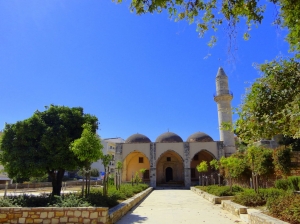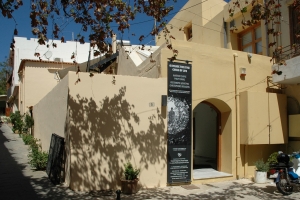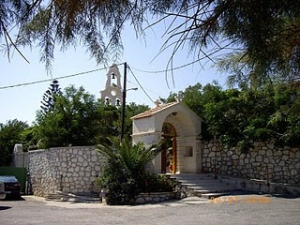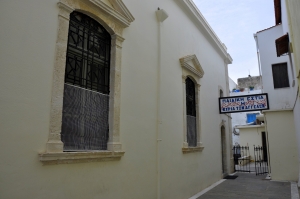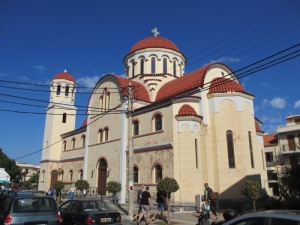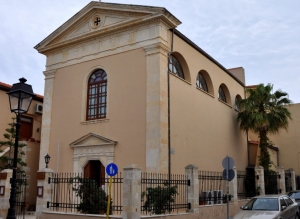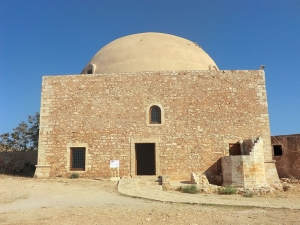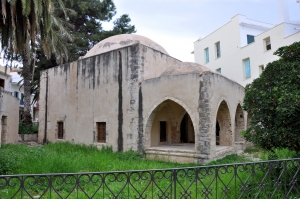The mosque of Mastabas, with the characteristic 9-dome architecture, is an authentic monument of Rethymnon and has been conceded to GNHM following a decision of the Ministry of Culture. Upon completion of restoration and of the relevant museological study, it will operate as a Museum of Palaeontology, being annex of Goulandris National History museum in Crete.
It is based in the heart of the old historic town, under the Venetian wall and the Archaeological Museum. It is housed in a Venetian building that operated (in the early 20th century until the 70s) as a soap factory and is now a modern museum around covering about 1000 sq.m.
The convent of Jesus Christ (Christ the Savior) is built on the hill of Timios Stavros, in the west suburb of Rethymnon called Koumbes. The monastery was probably initially founded during the Venetian period, like several monasteries and temples in the region.
The present church of the Lady of the Angels or Mikri Panagia (Little Virgin Mary) to the east of the Old Town of Rethymnon, in contrast to the Megali Panagia (Great Virgin), that is, the Rethymno metropolitan church, was built in the last years of the Venetian rule and was dedicated to Mary Magdalene of the Dominican Order.
The Great Temple of the Four Martyrs is located south of the walls of the old town of Rethymnon and close to the Venetian gate Guora Porta. It is dedicated to the neo-martyrs Angelis, Manuel, Georgios and Nikolaos Retzepis from Melambes, who were killed near the spot in 1824. T
The neoclassical church of Agios Antonios in the old town of Rethymnon belongs to the Catholic doctrine. It was built in 1890, as the inscription states at the entrance, and was built to meet the needs of the city's Catholic Christians. The cathedral dedicated to Saint Francis served as a workhouse.
The mosque of Ibrahim Khan is located almost in the center of the imposing fort Fortezza in Rethymnon. The building was built in 1583, during the Venetian occupation, and functioned as a Christian church dedicated to Saint Nicholas.
The Mosque of Kara Musa Pasha in Rethymnon was named after the admiral of the Turkish occupation forces of Rethymnon in the year 1646. The monastery of Saint Barbara was operating there from the Venetian occupation, from which nothing survives. The mosque belongs to the Ottoman architectural type of cesme, with a four-sided vaulted tank and two main facades.















-28c51c1b50.jpg)


